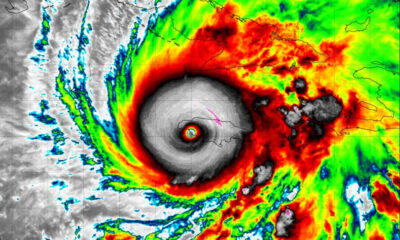Health
Namibia declares outbreak after Crimean-Congo fever case confirmed

Namibia has declared an outbreak of Crimean-Congo Hemorrhagic Fever after a confirmed case resulted in the patient’s death, according to health officials.
Namibia’s Ministry of Health and Social Services said that the patient was admitted to a health facility in the capital, Windhoek, last Tuesday and died the following day. Officials said laboratory testing later confirmed the virus.
Health officials said the confirmation meets World Health Organization (WHO) criteria for declaring an outbreak. No additional suspected cases were mentioned.
The patient was from the Khomas Region in central Namibia. The ministry said it has initiated contact tracing, surveillance, and other measures to prevent further transmission.
Crimean-Congo Hemorrhagic Fever is a severe viral hemorrhagic illness spread primarily through bites from infected ticks, particularly of the Hyalomma genus. It can also spread through contact with infected animal blood or tissues and, less commonly, through close contact with the bodily fluids of infected people.
The disease typically begins with sudden fever, headache, muscle pain, and nausea, followed in some cases by bleeding symptoms such as bruising or nosebleeds, according to the World Health Organization. Symptoms can appear within one to thirteen days after exposure, depending on the route of transmission.
There is no vaccine, and treatment relies on supportive care. The disease is endemic in parts of Africa, Eastern Europe, the Middle East, and Central Asia.
Namibia last experienced confirmed cases of the virus between 2016 and 2023, when seven infections and four deaths were recorded, according to the notice. Fatality rates in hospitalized patients can range from 9% to 50% in documented outbreaks.

-

 World1 day ago
World1 day agoEthiopian volcano erupts for first time in thousands of years
-

 Legal1 week ago
Legal1 week agoMichigan man JD Vance sentenced to 2 years for threatening Trump and JD Vance
-

 Politics1 week ago
Politics1 week agoU.S. to designate Maduro-linked Cartel de los Soles as terrorist organization
-

 Health1 week ago
Health1 week agoCambodia reports fatal H5N1 bird flu case in 22-year-old man
-

 Legal5 days ago
Legal5 days agoWoman in critical condition after being set on fire on Chicago train
-

 World5 days ago
World5 days agoHurricane Melissa registered 252 mph wind gust, breaking global record
-

 Politics1 week ago
Politics1 week agoEpstein survivors release PSA calling on Congress to release all files
-

 Legal4 days ago
Legal4 days agoSuspect in San Diego stabbing shot by authorities after fleeing into Mexico




